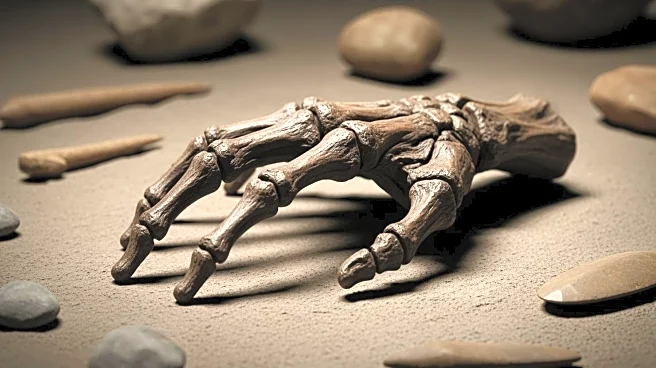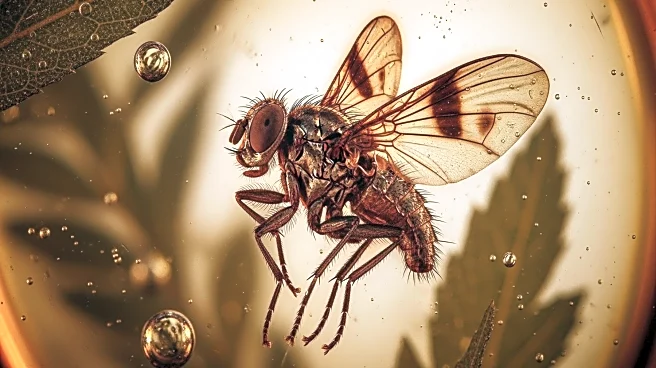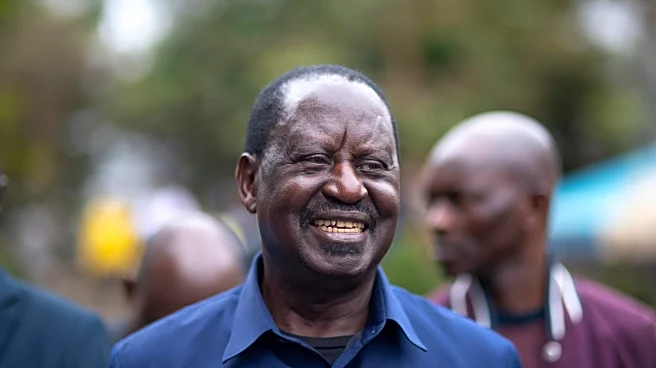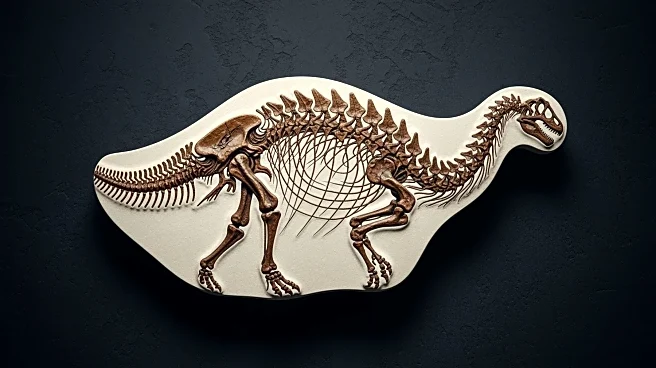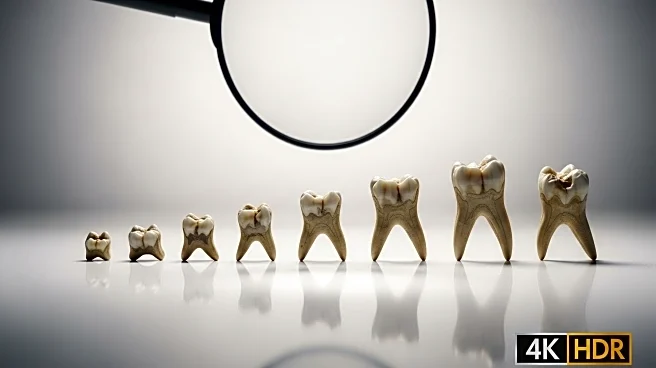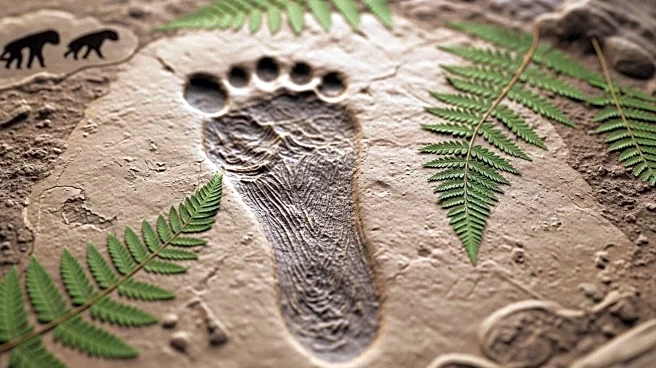What's Happening?
Anthropologists have discovered the first-ever fossil hand of Paranthropus boisei at Lake Turkana, Kenya, alongside a partial skeleton. This discovery provides new insights into the physical characteristics
of P. boisei, a species that lived in Africa from over 2.6 million to 1.3 million years ago. Previously, only skulls and teeth of P. boisei had been found, leaving its full skeletal structure largely unknown. The newly discovered hand bones reveal that P. boisei shared some bipedal and manipulative adaptations with the Homo genus, possessing a long robust thumb and dexterous pinkie similar to modern humans. However, its hand also resembled that of a gorilla, indicating significant brute power. This discovery raises questions about whether P. boisei was capable of making tools, as it lived alongside other early human species known for tool use.
Why It's Important?
The discovery of P. boisei's hand bones is significant as it challenges previous assumptions about the species' capabilities and lifestyle. Understanding the physical attributes of P. boisei can provide insights into the evolutionary pathways of early hominins and their tool-making abilities. This could reshape theories about the development of tool use among early human species and the ecological strategies they employed. The findings suggest that P. boisei may have been more adept at manual food processing rather than tool-making, which could influence interpretations of early human behavior and adaptation.
What's Next?
Further research is needed to explore the implications of P. boisei's hand structure on its lifestyle and ecological strategies. Anthropologists may conduct comparative studies with other hominin species to better understand the evolutionary significance of these physical traits. Additionally, the discovery may prompt new excavations at Lake Turkana and other sites to uncover more skeletal elements of P. boisei, potentially providing a fuller picture of its anatomy and capabilities.
Beyond the Headlines
The discovery highlights the complex interplay between physical adaptations and ecological strategies in early human evolution. It suggests that different hominin species may have developed unique adaptations to thrive in similar environments, leading to diverse evolutionary paths. This could have broader implications for understanding the role of physical traits in shaping human evolution and the development of cultural practices.
